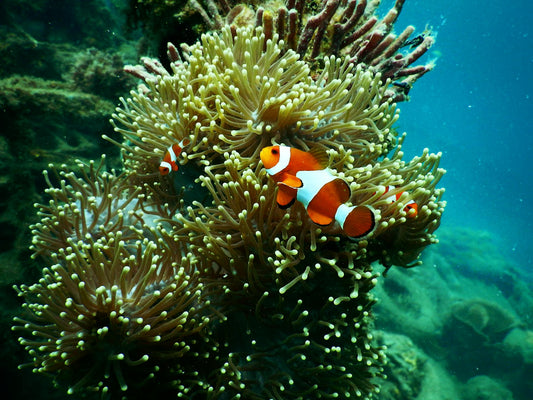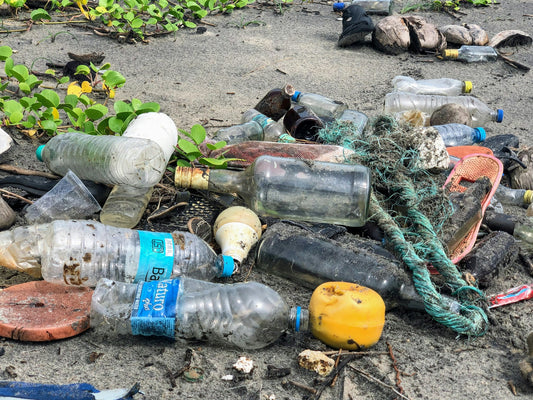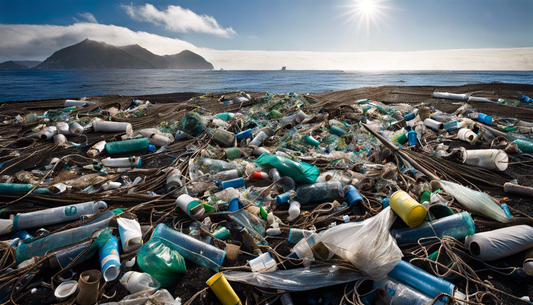Share
Outcomes of the 2022 UN Biodiversity Conference
Summary:
- final agreement deemed the "Paris Agreement for nature"
- parties align on four goals and 23 specific targets for 2030 and 2050
- conserving 30% of the world's land, water, and resources by 2030 is at the core of these targets
- lack of financial commitment and accountability cause doubts
_________________________________________________________
The United Nations Biodiversity Conference (COP15) was held in Montreal from December 5-19, 2022. This was an important event for global leaders to come together and discuss how best to protect and preserve biodiversity around the world. While it sounds similar to the recently held COP27 in Sharm el-Sheikh, the events are related but have a different focus.
COP27 was focused on reducing greenhouse gas emissions and tackling climate change under the UN Framework Convention on Climate Change (UNFCCC). COP15 in Montreal targeted the protection of natural ecosystems and biodiversity under the UN Convention on Biological Diversity (CBD).
This blog post will summarize the highlights of this important conference and highlight why the protection of biodiversity is essential for the stability of our planet's ecosystem.
How Does Biodiversity Affect the Stability of an Ecosystem?
Biodiversity is essential to the systems that support all life on earth, including humans. Without the diversity of animals, plants, and microorganisms, we cannot have the healthy environment that we rely on to provide us with the air we breathe and the food we eat. While some aspects of biodiversity seem obvious – such as the protection of endangered species and plants – biodiversity as a whole is incredibly complex, and the very core of the planet's ecosystem.
There are many reasons why biodiversity is important for humans and why we need to protect it. It is estimated that pollinators such as birds, bees and other insects account for a third of the world's agricultural production. Without pollinators, we wouldn't have apples, cherries, blueberries, almonds, and many other foods we eat.
Agriculture also depends on invertebrates (e.g., Insects, spiders, worms, etc.). They help maintain the health of the soil in which crops grow. Soil is full of microbes that are essential for releasing the nutrients plants need to grow, which are then passed on to us when we eat them.
Sea life is a source of animal protein for most people. Trees, forests and wetlands and grasses slow down water, help the soil absorb rain, and are thus essential for flood protection. Trees and other plants keep the air we breathe clean and help us deal with the global challenge of climate change by absorbing carbon dioxide. Coral reefs and mangrove forests act as natural defenses that protect the coast from waves and storms.
Prof. David Macdonald of Oxford University summarizes it all in one sentence:
“Without Biodiversity, there is no future for humanity”.
What is the Biodiversity Conference (COP15)?
The international meeting takes place every few years to address the conservation and sustainable use of biological diversity, including plants, animals, and ecosystems. The conference is organized by the United Nations Environment Programme (UNEP) and is attended by representatives from countries around the world.
The main purpose of the UN Biodiversity Conference is to review and assess progress made in implementing the CBD, a global treaty that aims to protect and promote the conservation of biodiversity. The conference also serves as a platform for countries to discuss and adopt new policies, strategies, and actions to address the ongoing loss of biodiversity and the impacts of this loss on the environment and human society.
In addition to reviewing progress and adopting new policies, the UN Biodiversity Conference also provides an opportunity for countries to share best practices, exchange information, and build partnerships to support the implementation of the CBD and other related international agreements. The conference also plays a role in raising awareness about the importance of biodiversity and the need for global action to protect and conserve it.
What Measures Are Needed to Protect Biodiversity?
Biodiversity is declining faster than at any time in human history. The number of native species in most of the world's habitats has fallen by at least 20% since 1900, and wild populations have declined even faster by an average of 69% over the past 50 years.
As a recent report by WWF states: “The planet is in the midst of a biodiversity and climate crisis… and we have a last chance to act… A nature-positive future needs transformative - game changing - shifts in how we produce, how we consume, how we govern, and what we finance.”
The report calls for a shift to being nature positive, actively recovering natures ecosystems, rather than just halting their loss. Ahead of COP15, members have been working on new initiatives to address the challenges of diversity. In the so-called post-2020 global biodiversity framework all 196 COP member states work to revert biodiversity loss by 2030.
The discussions at COP15 had to deliver around four overarching topics:
- Confirmation and adoption an agreed upon global framework of specific procedures, including necessary measures and resources for implementation.
- A clear objective to combat over-exploitation, pollution, fragmentation, and ensure sustainable agricultural practices.
- A plan that protects the rights of indigenous and recognizes their contribution as stewards of nature. After all, according to the UN, indigenous lands contain about 80% of the world's biodiversity, while about 20% of the world's land area.
- Diversified funds and combined funds going to nature to direct money to sustainable investments and avoid investments that damage biodiversity
The Outcomes of this Year's Biodiversity Conference (COP15)
The parties announced a new agreement on Dec 19th called the “Kunming-Montreal Global Biodiversity Framework” after the official host countries China and Canada. The agreement covers four high-level goals around the protection of biodiversity by 2050 and 23 more concrete targets.
These targets include conserving 30% of the world's land, water, and resources by 2030 (“30 by 30”), which is supported by mobilizing at least US$200 billion annually in domestic and international investment related to biodiversity in the same timeframe.
At the same time, the increase in sustainable investments is accompanied by a reduction of unsustainable investments by at least $500 billion by 2030.
The agreement also includes indigenous peoples across multiple of the 23 targets, which is seen as a successful acknowledgement of their contributions. The targets emphase a protection of their sustainable practices and traditional knowledge, as well as ensuring their part in legislative decision-making and protecting traditional territories.
While the media consensus about COP15 is generally positive, there are some open disputed issues around financing and accountability (which interestingly enough was also the case for COP27).
The agreement does include a commitment by developed countries to giving at least 20 billion dollars per year to developing countries by 2025, increasing to 30 billion dollars per year by 2030. Still, some developing countries argued for more financing by developed countries and setting up a new conservation fund to achieve the ambitious targets.
Additionally, critical voices flag that none of the targets set at COP10 in Aichi, Japan in 2010 were achieved and the agreement is lacking measurable and quantifiable goals that hold parties accountable. With this lack of accountability, time will tell if the ambitious targets will be enough to protect our beautiful planet and prevent the extinction of further species critical to our survival.
Despite these reasonable doubts, we will trust the statement of Norway’s environment minister Espen Barth Eide, who claims: “I think we have enough to declare it the Paris Agreement for nature[…]”.
We hope you enjoyed this article. If you want to read more like this, make sure to check out our Blog and follow us on Instagram. If you are interested in our sustainable eco SWOPs, check out our Shop.
Sources: royalsociety.org, unep.org, cbc.ca, reuters.com, newscientist.com, theguardian.com, cbd.int, climatechampions.unfccc.int,
Photo credit: Pixabay








